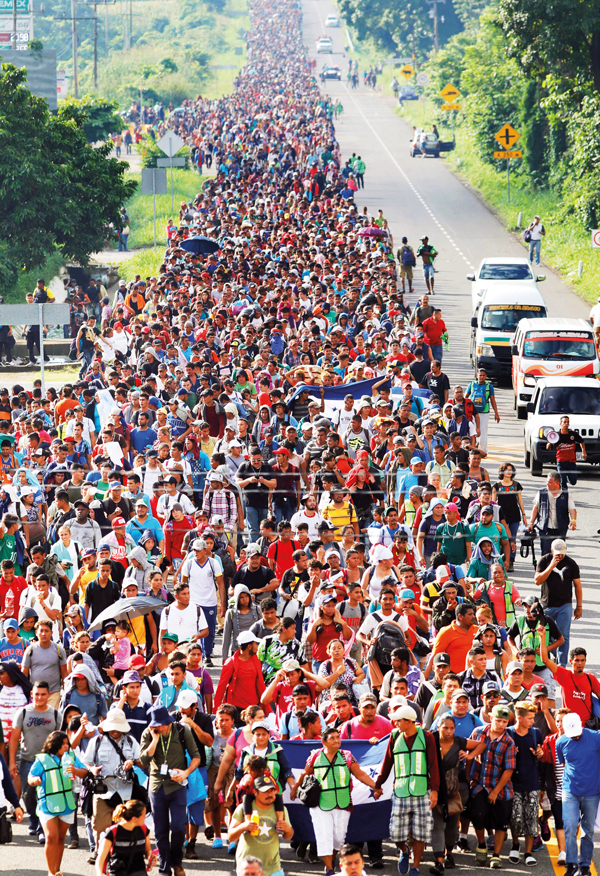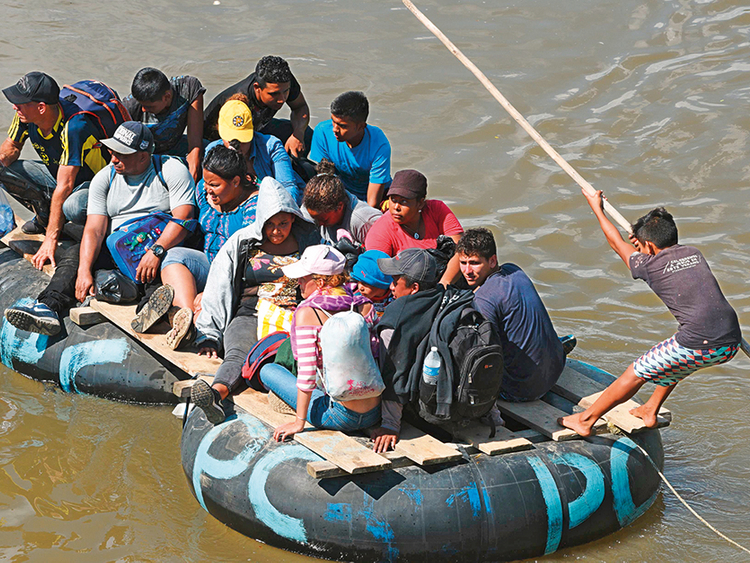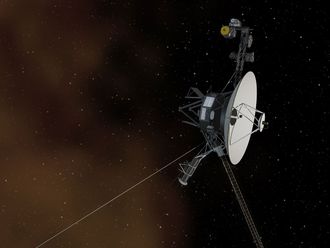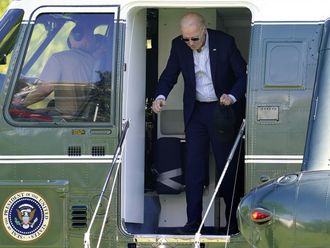LOS ANGELES: A tremendous caravan of migrants from Central America that slowly trekked toward the southwestern border this week, both captivating the world and enraging US President Donald Trump and other politicians, is just the latest of several to stretch north towards the United States in recent years.
Though the current group appeared to be among the largest, two caravans last year each drew about 350 migrants. Some travelled all the way to the United States, where they applied for asylum. Others sought protection in Mexico. Still others dropped out along the way.
In this case, in defiance of the Mexican and US governments, more than 7,000 Central American undocumented migrants have been en route to the United States for more than a week.
“It’s not true that everyone wants to end up in the US. Many people in that caravan will seek asylum in Mexico,” said Joanna Williams, advocacy director for the Kino Border Initiative, which works with migrants.
But Mexican officials have said migrants who seek asylum do not have the legal obligation to apply in Mexico, and, thus, many hundreds or thousands are likely to show up at the US border to request protection. Crowds of migrants often make the journey over land together in large numbers to protect themselves against drug traffickers, muggers and rapists who stalk the trail. The largest caravans tend to take place during the Easter season.
The last Easter caravan to reach the United States departed Central America in April. At its peak, it numbered about 1,500 people, according to Alex Mensing, project coordinator with Pueblo Sin Fronteras, the transnational group that organised it.
By the time it reached San Diego in early May, the group had dwindled to fewer than one-third of its original size. Many of those who sought asylum in the US were parents and children who were separated under the zero-tolerance policy that criminally prosecuted illegal entrants. (Trump halted the separations on June 20.)
"Sadly, it looks like Mexico’s Police and Military are unable to stop the Caravan heading to the Southern Border of the United States."
— Donald Trump | US President
Eric Fish, who represented several migrants in their criminal prosecutions in federal court, said that they were typically mothers, children and young men who had fled violence in their home countries at the hands of gangs or intimate partners.
“It was shocking to me that they were being prosecuted when they were coming here to seek protection from horrific violence,” said Fish, a trial lawyer at the Federal Defenders of San Diego. Of those caravan participants, 403 were referred by United States authorities for “credible fear” interviews, the first step toward applying for asylum in the US, according to the Department of Homeland Security. More than 90 per cent of them passed that step.
Mensing said that his organisation had helped 250 caravan members secure lawyers. So far, three have won asylum. About 30 remain in detention. The majority have been released as their asylum cases wind through the immigration courts.
EXPLAINER: Who are the migrants and where are they headed?
Tapachula, Mexico (AP): The caravan of Central American migrants moving through Mexico toward the US border has bloomed to more than 7,000 people. Here’s why the caravan is bigger than previous ones and drawing so much attention.
WHAT IS THE CARAVAN?
The caravan is largely made up of young men and women with children fleeing Central America’s violence, poverty and corruption. Most are from Honduras, but hundreds have also joined from El Salvador and Guatemala. Over the years, Mexican advocacy groups organised such caravans to draw attention to the plight of asylum seekers, mostly from Central America.
But this year’s migrant caravan appears to be the biggest ever. Unlike past caravans that were organised mostly in Mexico, this one started spontaneously in Honduras with about 160 people leaving from the gang-plagued city of San Pedro Sula. The group grew to more than 1,600 by the time it reached the Guatemalan border.
HOW IS THIS ONE DIFFERENT?
For years an annual caravan was organised by advocacy groups in southern Mexico around Easter to draw attention to the plight of Central American migrants. But since Trump took office in 2017, the caravans have grabbed attention in the US and grown from only a few hundred to more than 1,000 people. Earlier this year, a smaller caravan made its way to Tijuana, where more than 200 people presented themselves at the border and applied for asylum in the US. The others returned home, tried to sneak into the United States or were deported by the US or Mexico. With just two weeks before the November 6 midterm elections in the US, Trump has seized on the migrant caravan to make border security a political issue and energise his Republican base. Trump has said he is also considering using the US military to seal off the border.
WHO IS BEHIND THE CARAVAN?
It’s unclear exactly how the caravan started in Honduras, but it appears to have no formal leadership. “No one is capable of organizing this many people. Nobody,” said Irineo Mujica of Pueblo Sin Fronteras (People Without Borders), which is providing support to the group. “It’s an exodus.” Many Mexicans have turned out to help the migrants, handing out food and sometimes clothes in each town where they stop.
WHAT’S NEXT?
The caravan is slowly advancing into Mexico. The length of the journey could more than double if the migrants go to Tijuana, San Diego, on the other side of the country. The caravan earlier this year shrank significantly as it moved through Mexico, and only a tiny fraction — about 200 of the 1,200 in the group — reached the California border. Trump says the migrants will not be allowed to enter. However, US law affords those fleeing violence the right to apply for asylum.














